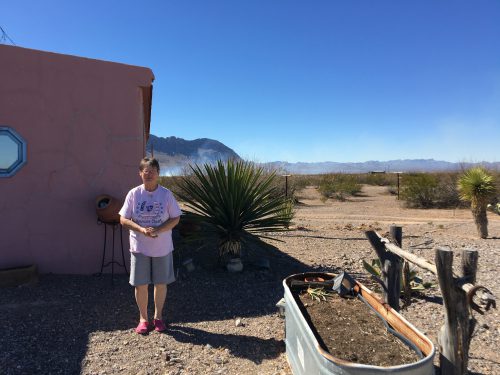Deep in the heart of our galaxy sits a black hole. And it’s not just any black hole – but a super-massive one.
A black hole, also sometimes known as a singularity, is a distant celestial object so dense and massive that its gravity traps gas, rock and even light. At more than 25,000 light years away, Earth is not in any danger of being sucked in to this black hole. At least not any time soon.
Astronomers call the super-massive black hole at the center of our galaxy Sagittarius A*. It is relatively close to Earth in astronomical terms – close enough for scientists to be able to get a look at the stuff moving around it.
To map the magnetic field lines present within gas and dust swirling around Sagittarius A*, a team of researchers used the CanariCam infrared camera on the Gran Telescopio Canarias (GTC), located on the island of La Palma, Spain. Mapping the structure of the magnetic field allowed the scientists including, Chris Packham of the University of Texas-San Antonio, to create images of the core of our galaxy. Packham is associate professor in the department of Physics and Astronomy at the University of Texas at San Antonio.
Packham’s team gave astronomers the clearest maps yet of Sagittarius A* “using new technology, new optics and a new telescope.” Researchers saw “material spiraling around …[the] black hole” and the magnetic fields generated by that swirling. They saw how “those magnetic fields play a role in guiding [gas and] dust in the formation of new stars near the center of our galaxy.”
“We can’t see a black hole,” says Packham. “It’s black against the black of space. Instead what we can see is material – gas and dust – falling slowly into the black hole.” As the gas and dust spiral around the black hole, they form what astronomers call an accretion disc. In the disc, the gas and dust continues swirling and compacts together allowing friction to generate heat – beyond red hot, ”into ultraviolet… even into x-rays.” That’s what astronomers see; the heat, the ultraviolet and the x-rays coming from the accretion disc around the black hole.
But what lies in the center of Sagittarius A*? “Physics breaks down. We simply don’t know what is going on at the very center of those black holes,” says Packham. “They have extremely high mass, but zero volume. When we have something with mass and other properties [like gravity and magnetic fields], but zero volume,” our understanding breaks down. And much like division by zero, astronomers and physicists don’t quite comprehend it yet.
Packham says astronomers can use the map of the core of the galaxy and Sagittarius A* that his team created to improve understanding of black holes.
“We can use [what we learn from Sagittarius A*] as an extreme laboratory to understand” the physics of black holes.
“By understanding the black hole, we’ll get a new insight into physics that we can then [employ] here on earth,” Packham says.
Written by Christopher De Los Santos.
















